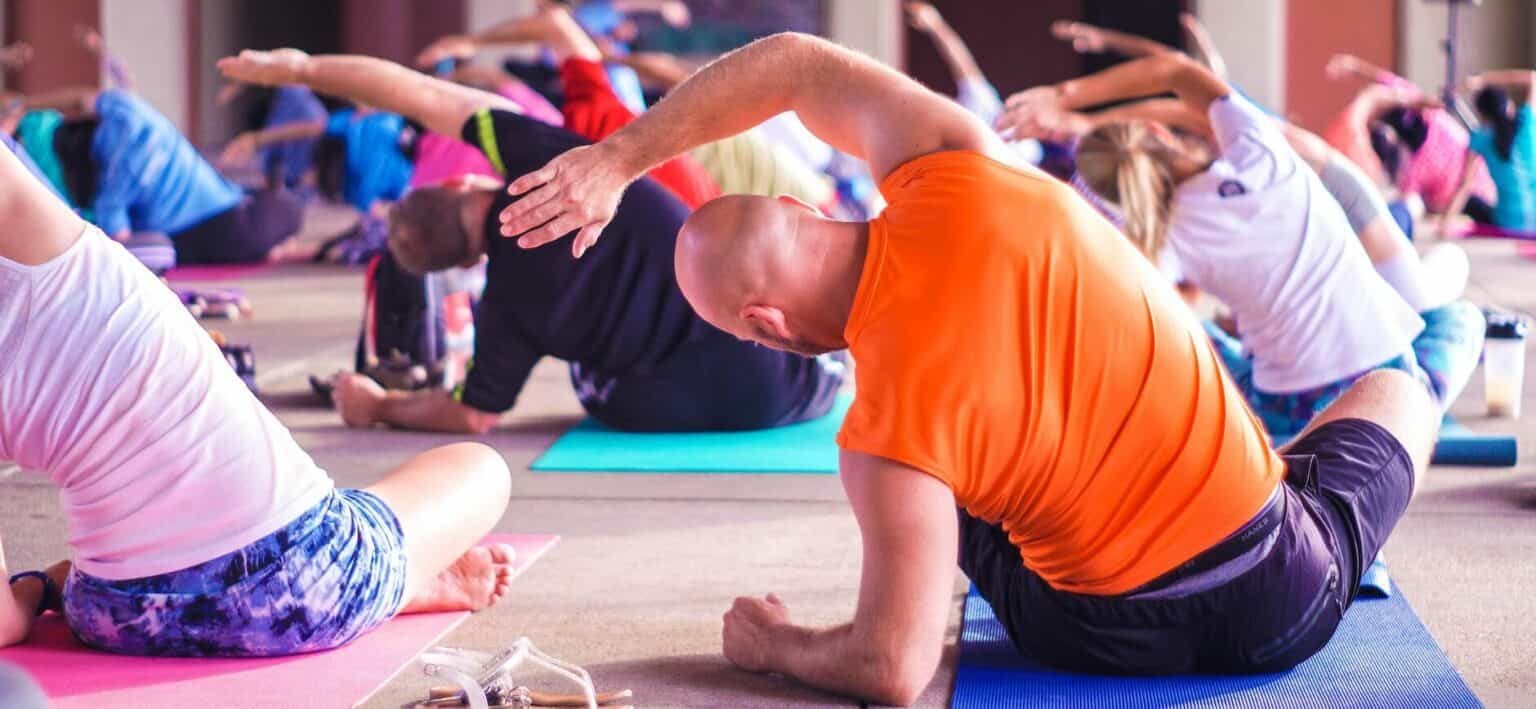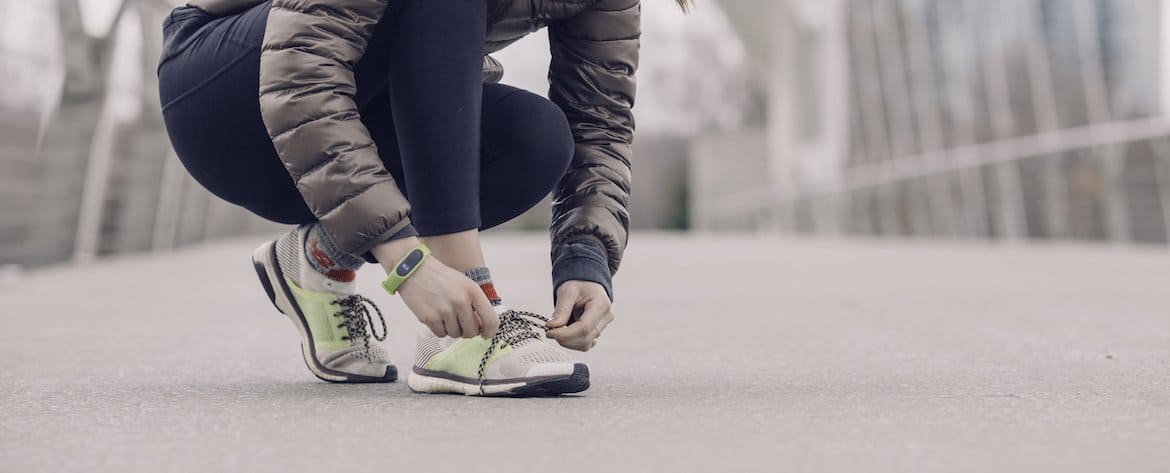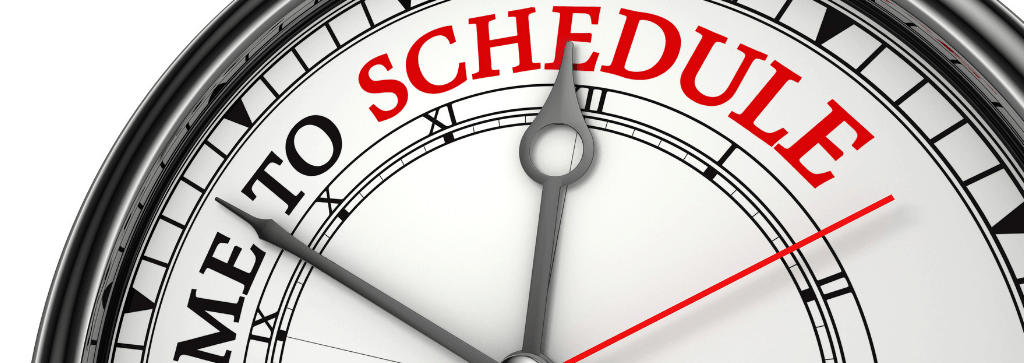Some people are surprised to hear that there was a chap called Pilates.
Joseph Pilates (1880-1967) designed his exercise method (which he called Contrology) to ‘work every muscle in the body thereby encouraging the circulation of blood to every fibre and tissue of the body’.
He used a combination of what he had learnt from yoga, circus arts, self defence, boxing and gymnastics – when you do Pilates, you can see different elements of these things (like when you do something that is upside down, it could easily have come from gymnastics or circus arts).
He said:
‘Contrology develops the body uniformly, corrects wrong posture, restores physical vitality, invigorates the mind, and elevates the spirit.’
He taught the person in front of him, so no one was taught exactly the same way as everyone has a different body with different needs. This means that the system is highly adaptable and allows people of vastly different levels of activity or fitness.
It can suit someone recovering from injury as well as someone who is fit, healthy and athletic.
Pilates isn’t just about strength though.
It incorporates focus, body awareness, movement awareness, balance, and flexibility. Two of the principle components of his exercise format that Mr Pilates stressed were those of breathing and ‘centring’ by which he meant in a physical sense but also in a mental sense. Therefore, Pilates can be thought of as a mind-body exercise, rather than just about getting stronger abdominal muscles.
The more physical aspect of ‘centring’ of Pilates is also known as core control or core stability. It trains you to engage both your inner and outer core:
- the inner core provides the spine and pelvis with stability
- the outer core supports the inner core and moves the trunk
Though the concept of the ‘core’ has been completely overplayed in the gym, personal trainer and physio worlds, there is definitely a need for a competent core with enough strength and appropriate timing and activity to provide support for the spine and pelvis.
There are two main forms of pilates:
Mat work
Mat exercises allow you to develop control with simple movements. It is a great way to improve the stamina of your core whilst working on control and flexibility. It can incorporate other equipment like theraband, exercise balls, chi balls and magic circles. While it could easily be seen to be an easier form of Pilates exercises, a lot of the mat work as actually very challenging!
Equipment
Mr Pilates was an inventor, and designed different pieces of equipment over a period of years to further challenge and add variety to what could be achieved.
Some of the equipment uses springs to either add resistance or to reduce loads, depending on the exercise. The Pilates equipment can be something that makes a programme more challenging, or it can be used to create a programme that is lighter in resistance for someone that needs a lighter workout. The equipment is therefore very adaptable and gives you the ability to do a programme that is at your level regardless of your current status.
Because pilates exercises are highly adaptable it is an exercise method that is suitable for everyone no matter your age or fitness level.
It is an effective way to improve or maintain fitness or for rehabilitation. Pilates is particularly beneficial if you suffer from neck or back pain as it trains the core muscles that help support the spine. However, there are many, many more applications.
Why do pilates with a physio?
Physios have an in-depth knowledge of anatomy and the way we are designed to move, so we can apply this when developing your program and supervising classes.
If you have an injury, we know how and when pilates can be safely used to improve recovery because we understand injury and how bodies heal.
How do you choose the right physio with which to do Pilates? That is another topic, but it is covered completely in the ebook ’11 1/2 Questions You Must Ask When Choosing A Physio’ – you can get this on the right hand side of this page.
It doesn’t matter how old you are or your ability level – we can modify Pilates exercises to suit because we understand the human body, injury and the way it changes over time.
In case you are not already sold, here is a list of a few other benefits you can get from Pilates:
- To increase your muscle strength
- To help your muscles work better – making the right muscles work when they are needed
- To help muscles to relax – there are times when they shouldn’t be active, and this can be just as important!
- To improve your stamina
- To help improve your core stability
- To help improve your flexibility
- To help you become more aware of and improve your posture
- To help improve balance – so important!
- To help increase your co-ordination
- To help increase your endurance
- To help with your bone density
- To help with lung function and breathing control
PLUS – It’s a great way to relieve stress and schedule in some ‘you time’
In the next blog, I will discuss the principles that Joseph Pilates talked about, and how they are still relevant to everyone who does Pilates.














